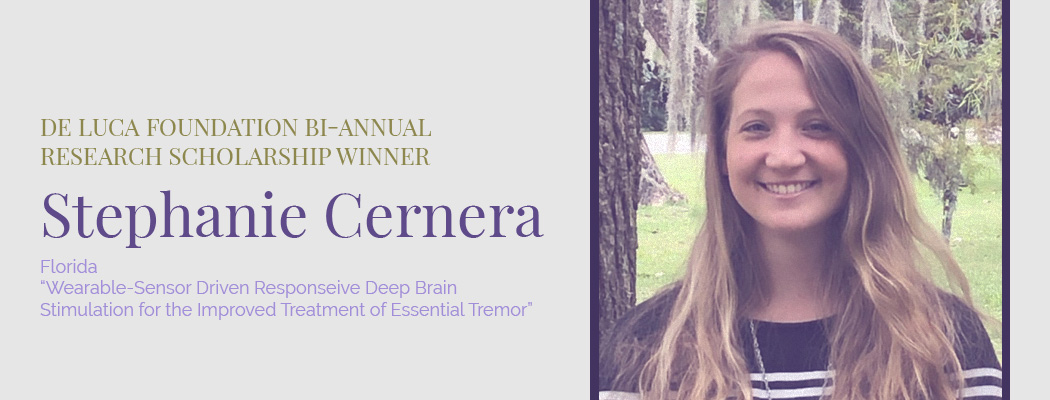The De Luca Foundation is pleased to announce Ms. Stephanie Cernera (Florida) as a winner of our bi-annual Research Scholarship.
To date, the De Luca Foundation has awarded 4 scholarships totaling $58,082.05, with the aim of supporting undergraduate and graduate students advance their research activities in motor control and human movement sciences.
Ms. Cernera will receive a scholarship in the amount of $15,000.00 USD for her research project titled “Wearable-Sensor Driven Responsive Deep Brain Stimulation for the Improved Treatment of Essential Tremor.”
The Foundation thanks all the applicants who submitted their proposal.
Applications for the first round of the 2019 scholarships will be accepted starting February 1st, and we invite students from around the world to participate. Please visit our Research Scholarship web page for complete details.
Advisor Name: Dr. Aysegul Gunduz
Background: Ms. Cernera is currently a PhD candidate in Biomedical Engineering at the University of Florida. She is in the Brain Mapping Laboratory, advised by Dr. Aysegul Gunduz, where her project focuses on using EMG signals to control a closed-loop deep brain stimulation paradigm in essential tremor patients. Prior, she earned her Bachelor of Science in Biomedical Engineering and a minor in Mechanical Engineering at Purdue University, where she conducted research focusing on measuring and defining neuromodulation safety.
Project
Title: “Wearable-Sensor Driven Responsive Deep Brain Stimulation for the Improved Treatment of Essential Tremor”
Summary: Deep brain stimulation (DBS) is a surgical intervention for patients with medication-refractory essential tremor (ET). This therapy has been proven successful in improving the quality of life for patients with ET; however, DBS currently runs continuously, and continuous stimulation disrupts normal physiological activity. This disruptive paradigm causes adverse side effects, including slurred speech and impairments in balance and gait. Since ET symptoms are paroxysmal, DBS does not have to be continuously delivered. We hypothesize that a wearable sensor, which records electromyogram activity, can provide the presence and characteristics of tremor for the means of a closed-loop DBS paradigm. From these efforts, a more personalized stimulation paradigm would be developed for patients, battery life of the device would be improved, and adverse side effects would be diminished.

